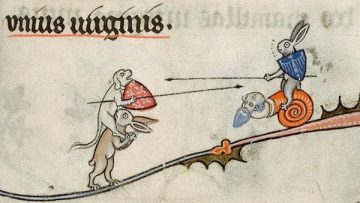
2 is representative of a phenomenon that is frequently encountered: the pointing finger is stretched well beyond human proportions. Not all pointing hands look realistic. The one seen in Fig. Without having done any conclusive research on this, it appears right hands are more common than left ones.

As you would expect, pointing fingers are attached to both left and right hands. There is even a nail attached to the finger – the first I have encountered.

It is a very natural looking hand, with the digits in just the right shape and angle. Looking at surviving maniculae in medieval books sparks yet another correction: tiny hands are often not really tiny. 2 – St Andrews, University Library, Typ NL A85 JT (Antwerp, 1487-1490) – Source Fig. It is tempting to think that we are looking at the reader here – although, realistically, this would probably be pushing it too far.
Illustrations in the margins of medieval manuscripts full#
It also makes you wonder what to think of a full figure as seen in Fig. If this is true, we may potentially be able to tell something about his status, for example whether he is a monk (wearing a habit) or a private individual. This inference potentially prompts an exciting kind of study, which has never been undertaken. 2). It is an exciting thought that the medieval reader who added this tiny drawing in the margin may simply have looked down and replicated his own arm. Sometimes these sleeves are elaborate and realistic, with folds and all (Fig. Pointing hands are almost never just pointing hands. Usually there are arms attached, which may even be fitted in sleeves. The term “manicula” is somewhat deceptive. This post celebrates the variety encountered in these personal and permanent pointers, from the plain hand to the exotic octopus.

The charming hands function as a kind of fingerprint of a particular reader, allowing us to assess what he or she found important about a book or a collection of books. Since the reader was able to shape hand and finger as he or she saw fit, we can sometimes recognise a particular reader within a single manuscript, or even within the books of a library. 1 – Leiden, Universiteitsbibliotheek, VLQ MS 99 (13th century) – Photo EK This is due to the fact that there was no standard format for the hand – beyond the point that it had to resemble one (Fig. While the purpose of these “helping hands” was the same (they were usually put there to highlight an important passage), their appearance varies considerably. Medieval readers do not seem to have been hindered by this convention: in the margins of books before print one frequently encounters a manicula or “little hand”. Pointing with your finger is rude, even though it is often extremely convenient and efficient.


 0 kommentar(er)
0 kommentar(er)
